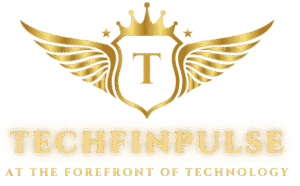Google recently shook the tech world by unveiling its latest AI chip, Trillium, signaling a major move into the AI hardware arena and putting Nvidia, the current leader in AI processors, on high alert. Known for dominating the AI chip market with its GPUs, Nvidia now faces competition as Google’s Trillium promises a new level of performance. On top of that, Google announced plans to roll out Nvidia’s latest H200 Tensor Core GPUs within days, adding even more options to its hardware lineup.
What Makes Trillium Different?
Google’s Trillium chip is a significant upgrade from its previous AI chip, the TPU v5e, offering substantial performance improvements designed to meet the growing needs of today’s AI applications. Here are some of the standout features:
4x Boost in Training Performance: Trillium brings over four times the training performance of the TPU v5e, enabling it to handle intensive AI training tasks much faster.
3x Increase in Inference Throughput: For inference, or the process of running models to generate results, Trillium delivers up to three times the throughput, making it highly effective for large-scale deployment.
Twice the HBM Capacity: High-bandwidth memory (HBM) capacity is doubled, allowing Trillium to store more data closer to the processor for quicker access, ideal for massive datasets.
Double the Interchip Interconnect (ICI) Bandwidth: The improved ICI bandwidth enables faster communication between chips, crucial for running large AI models smoothly.
These improvements make Trillium especially suited for handling large language models like Gemma 2 and Llama, as well as demanding inference applications such as Stable Diffusion XL, a popular diffusion model for generating detailed images.
Why This Matters in the AI Hardware Space
Nvidia has long been the go-to choice for companies building AI systems, particularly for their robust Tensor Core GPUs. But with Trillium’s advanced capabilities, Google is offering a compelling alternative. Here’s what this means for the AI landscape:
Increased Competition and Innovation: Google’s entrance into this space could push Nvidia to further innovate its products, leading to faster advancements across the board.
Potential Cost Reductions: With more choices, businesses might find it easier to invest in large-scale AI projects without facing Nvidia’s typically high prices.
Scalability and Accessibility: Trillium’s boosted performance could enable more companies to scale their AI solutions, benefiting fields from natural language processing to computer vision.
Google’s Dual Strategy: Trillium and Nvidia’s H200 Tensor Core GPUs
Interestingly, Google isn’t just relying on Trillium; it’s also bringing Nvidia’s H200 Tensor Core GPUs to its cloud offerings within days. The H200 is one of Nvidia’s latest AI processors, designed for complex, large-scale AI workloads. By incorporating both Trillium and Nvidia’s latest GPUs, Google seems to be adopting a two-pronged approach to give customers the best of both worlds.
What’s Next for AI Developers?
For AI developers and tech enthusiasts, the arrival of Trillium means an exciting new option in AI hardware. Google might soon offer Trillium-powered services, giving developers a chance to leverage this new technology and explore its capabilities for faster training and inference. Large language models, image generation models, and other compute-heavy applications could see a major boost in performance.
Google’s Trillium chip could very well change the landscape of AI hardware, offering an alternative to Nvidia’s long-standing dominance. With its substantial improvements in training, inference, memory capacity, and bandwidth, Trillium is positioned as a powerful option for companies and developers looking to push AI further. While Nvidia may still hold its position as a leader in AI processing, Trillium’s arrival could mark the start of a new era of competition and innovation in AI hardware, benefiting the entire industry. Will Nvidia up its game in response, or will Google’s Trillium shine as the new favorite? We’ll be watching closely as these two tech giants go head-to-head.







